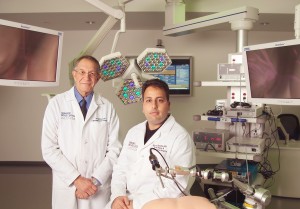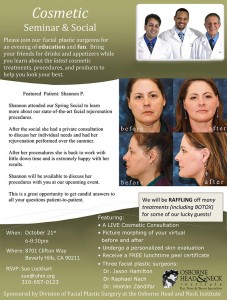- Folded Ear in Newborns: Treatment Options - April 11, 2018
- Newborn Ear Deformity: What Can Be Done? - April 11, 2018
- Ear Molding: An Overview - November 2, 2017
- Otoplasty for Protruding Ears - September 26, 2017
- Basal Cell Carcinoma: Facial Reconstruction Timing - September 26, 2017
- Clinical Considerations of Mohs Reconstruction of Cheek Defect - September 26, 2017
- Basal Cell Carcinoma: Nasal Bridge Reconstruction - September 26, 2017
- Skin Cancers Involving the Eyebrow: Clinical Considerations - October 3, 2016
- Treatment of Multiple Skin Cancer Lesions - June 1, 2016
- Skin Cancer: Nasal Reconstruction and Scar Management - June 1, 2016
- India Medical Mission 2018 - November 1, 2018
- Sleep Disorders: Sleep Apnea and Upper Stimulation Therapy - August 25, 2015
- The Naked Vocalist Podcast Featuring Dr. Reena Gupta - May 27, 2015
- New Therapy for Sleep Apnea – First Sleep Pacemaker placed in California at Osborne Head and Neck Institute. - December 12, 2014
- Boxer’s Ear: Can your ear explode? - December 12, 2014
- Nose Picking (Rhinotillexis) and Septal Perforations: Why I should stop picking my nose…? - November 24, 2014
- Deviated Septum and Septal Perforation - July 28, 2014
- Hereditary Hemorrhagic Telangiectasia: Nasal Septal Perforation Repair - June 25, 2014
- Dr. Mantle recognized at the Beverly Hills Medical Science Academy Awards - May 8, 2014
- Commonly Misdiagnosed Pathologies: Arteriovenous Malformations - April 9, 2014
I have a small bump on my nose. My doctor says it is basal cell carcinoma and I should have it removed. What should I expect to happen when I get it removed?
Case study
A patient in his forties noted a growing bump on the side of his nose. The mass was biopsied and and found to be consistent with basal cell carcinoma. The patient underwent Mohs surgical excision of the mass and was left with a much larger defect than the originally visible cancer. He was referred to Dr. Zandifar for nasal reconstruction. A skin flap (advancement flap) was used to close the defect and 3 months after reconstruction the area is hardly noticeable.
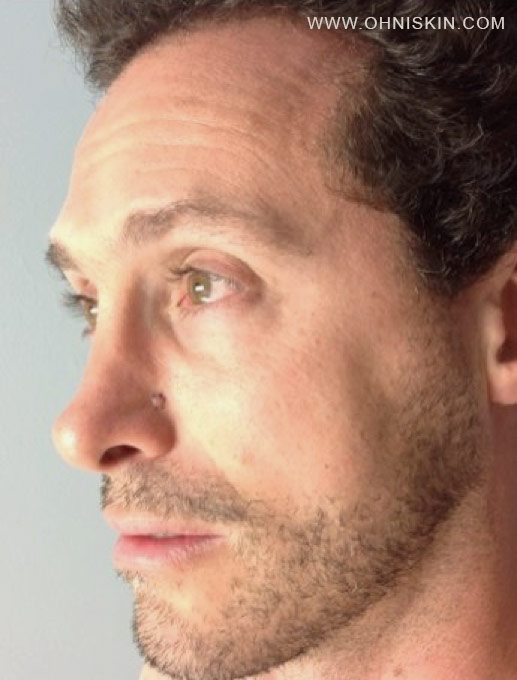
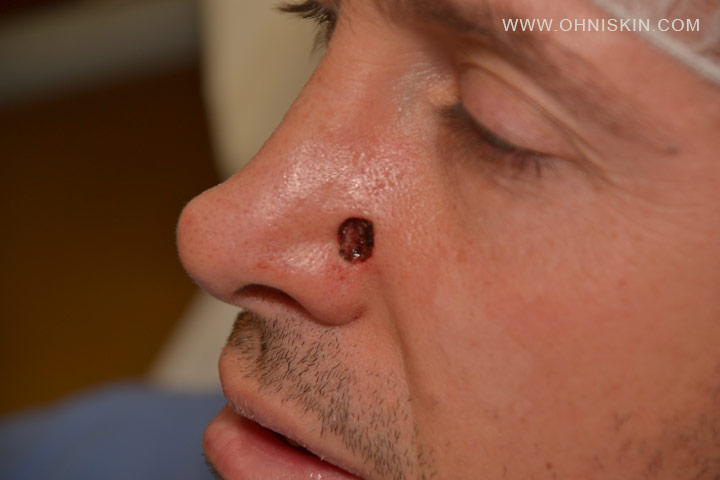
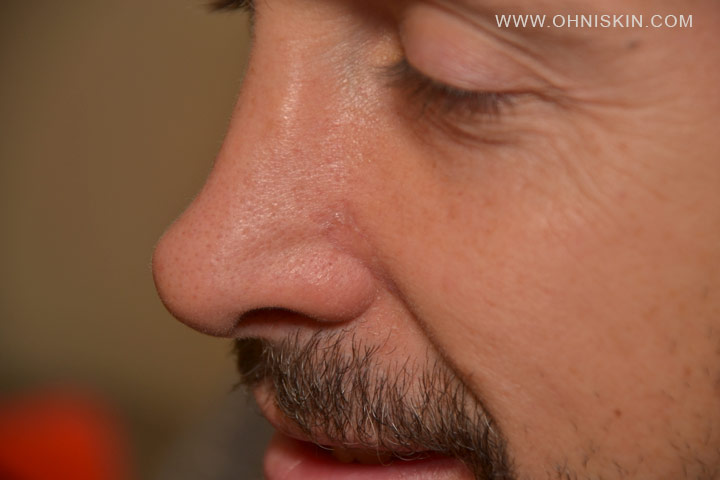
Discussion
Skin cancer is the most common malignancy worldwide and basal cell carcinoma is the most prevalent type of skin cancer. Over eighty percent of skin cancers occur on the head and neck, most frequently on the nose. Although basal cell carcinomas typically do not metastasize (meaning they do not travel to other parts of the body), they can be very destructive locally. The initially visible bump is often only the tip of the iceberg. The lesion can often be present in a larger distribution beneath the surface of the skin.
As such, early treatment is the best approach to basal cell carcinoma. Surgical excision, with any acceptable method, usually has a very high cure rate. The reconstruction is, however, a different story especially for those cancers that involve the functional parts of the face. These parts include the eyelids, mouth, nose, eyebrows, and ears. It is important that these defects be repaired using appropriate techniques that preserve function, while being cosmetically acceptable. For this reason, someone well versed in functional as well as cosmetic aspects of the face should perform the reconstruction.
To learn more about Dr. Hootan Zandifar or basal cell carcinoma, please visit, www.ohniskin.com.


